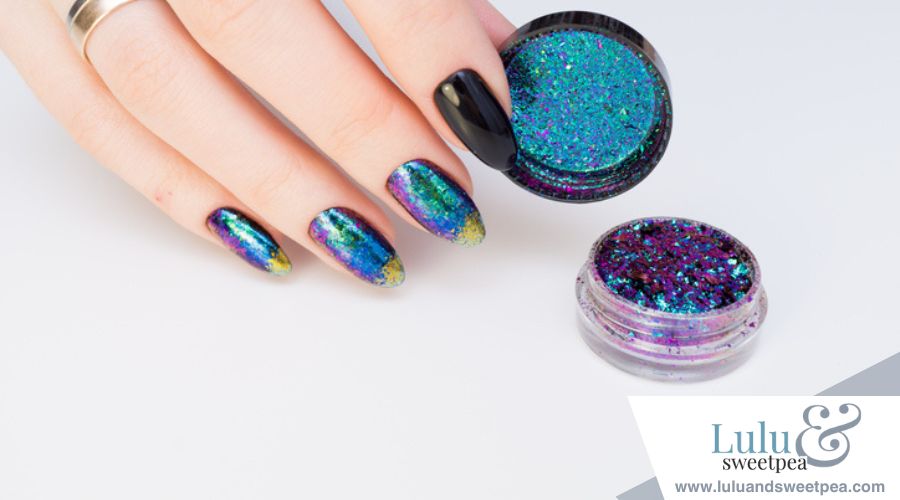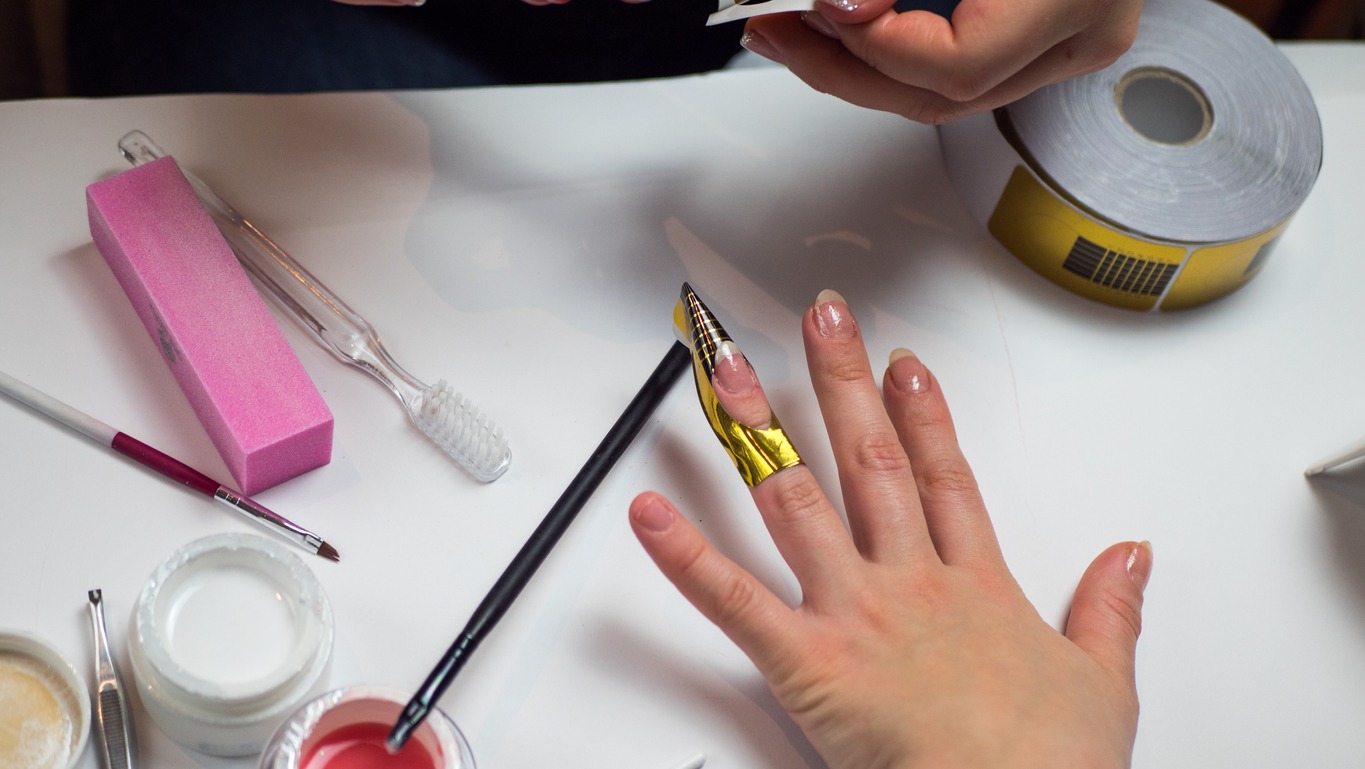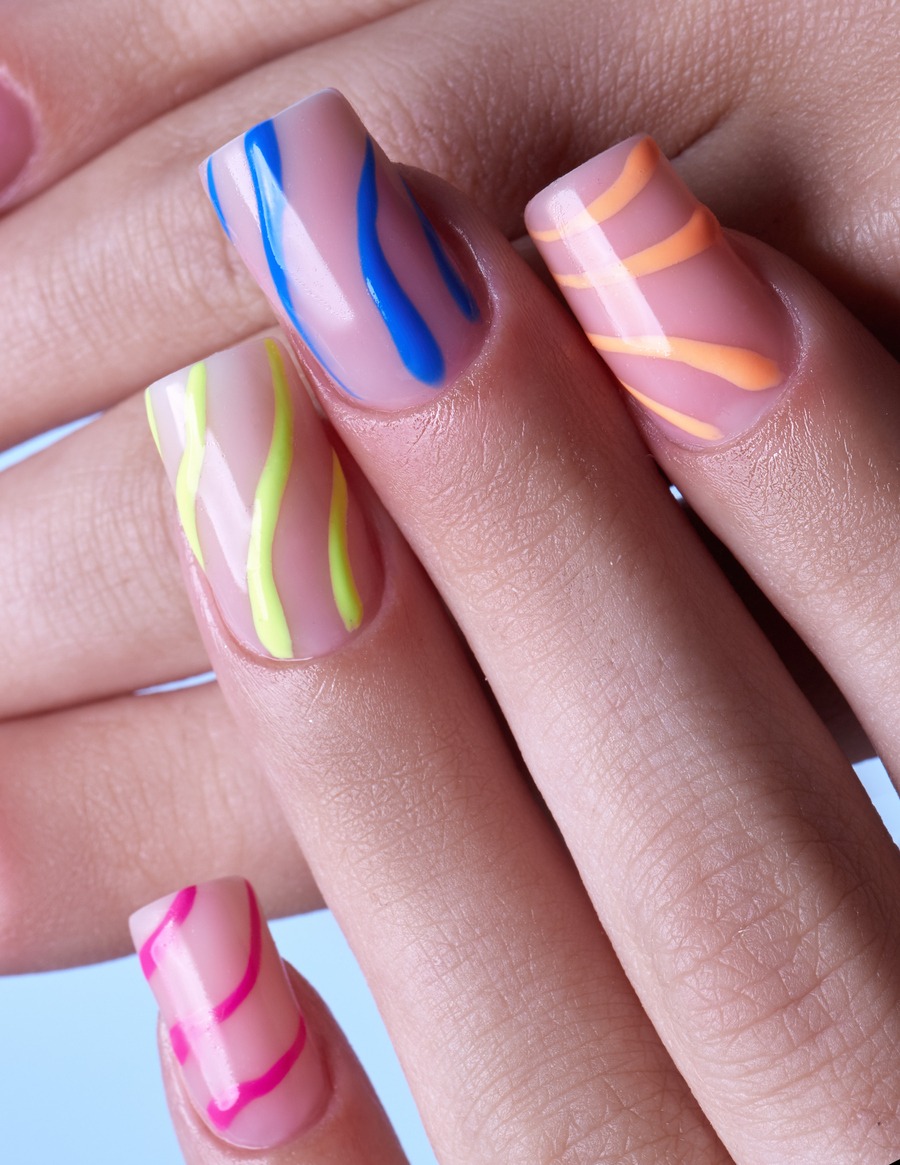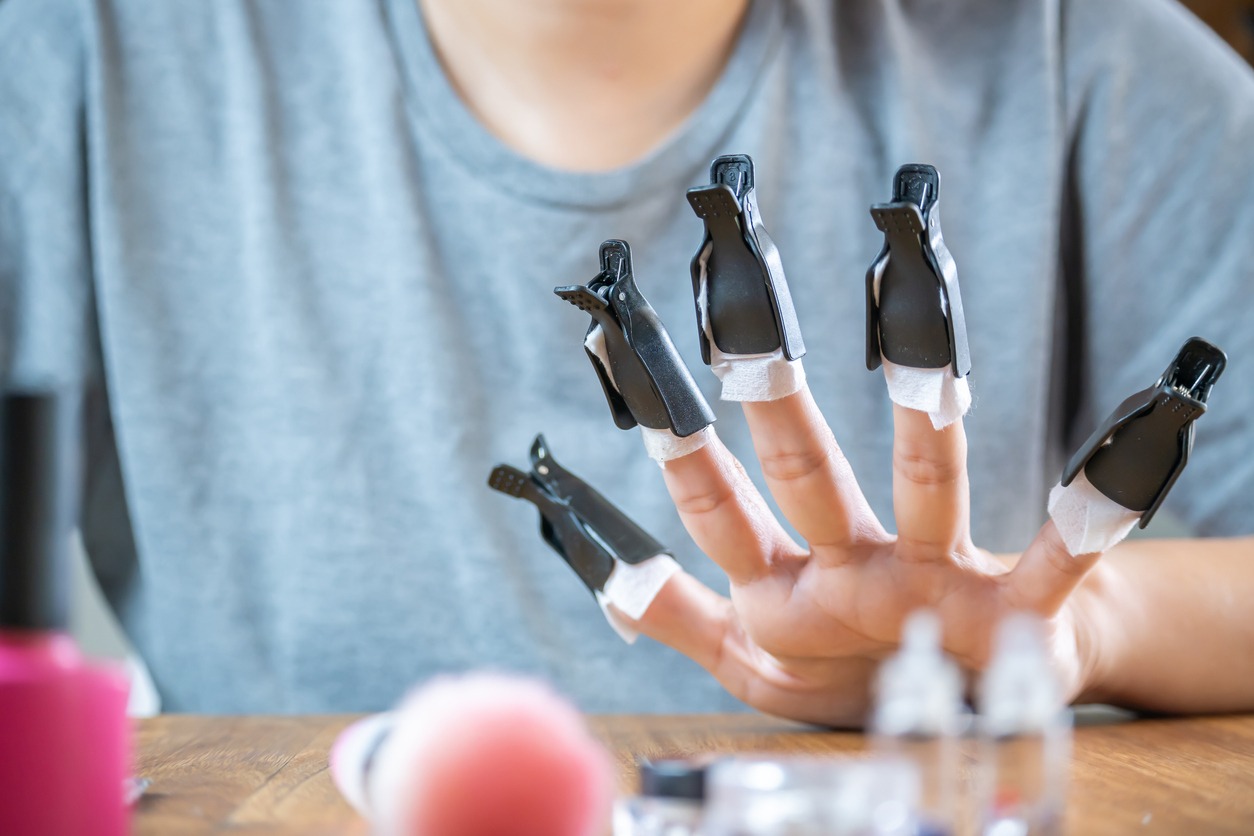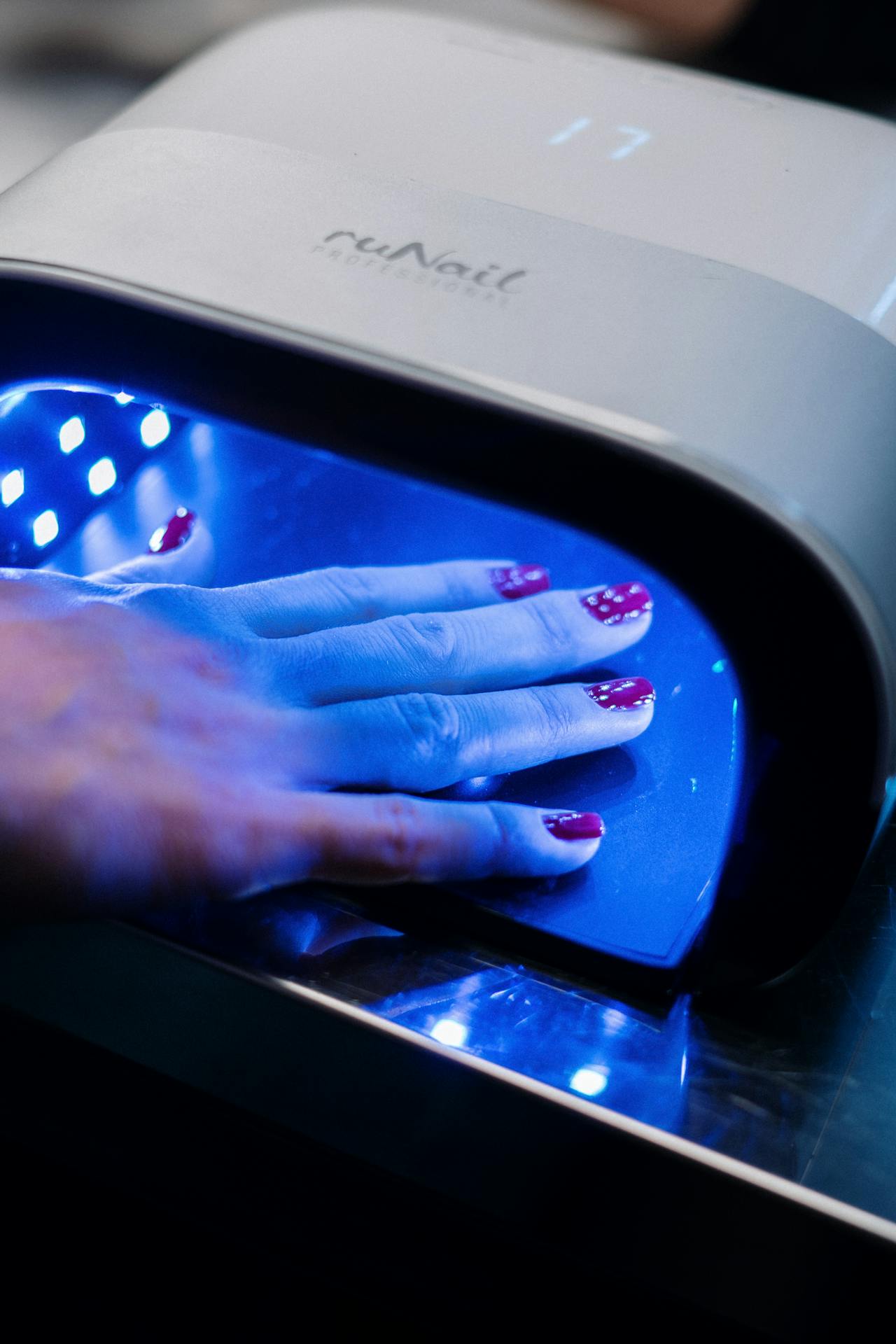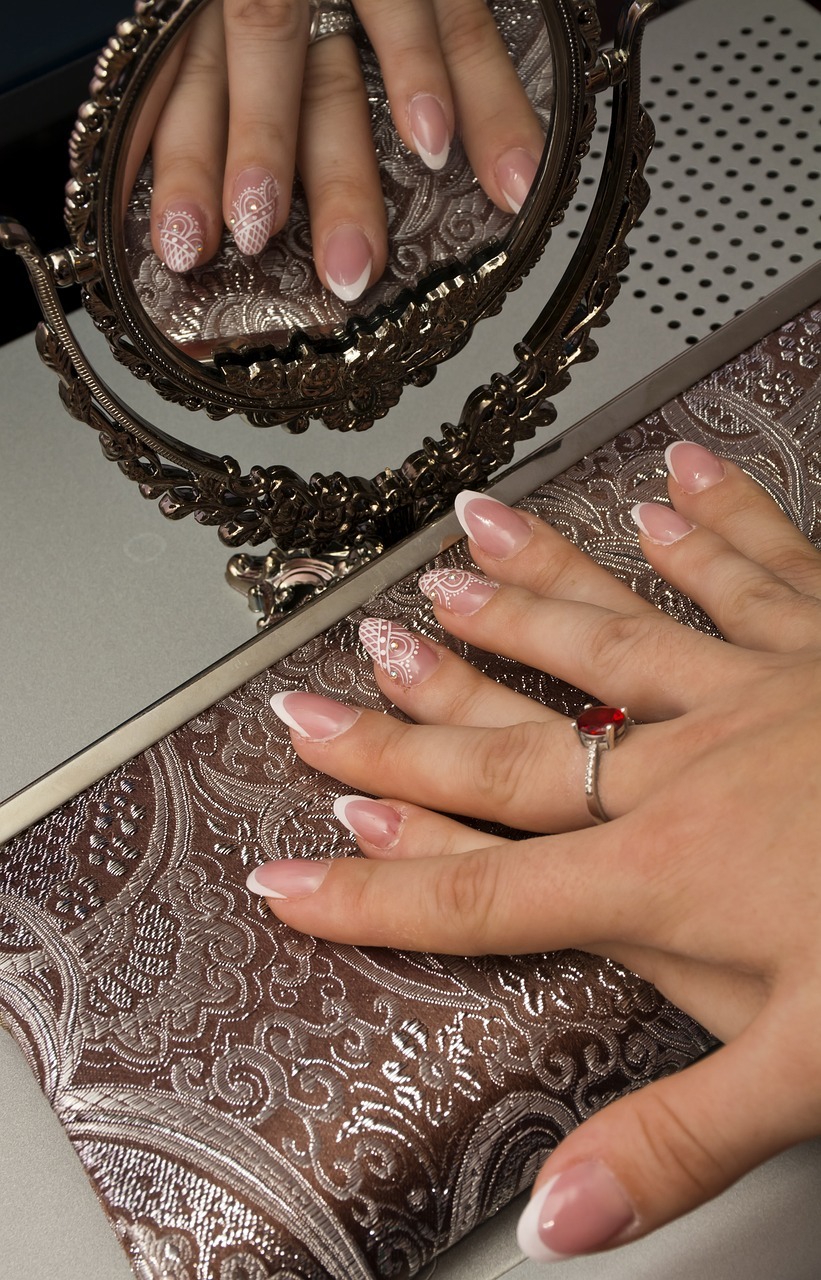Manicure dip powder is a nail enhancement technique that has surged in popularity due to its durability and range of color options. This method involves applying a pigmented powder onto the nails, which is then sealed with a clear coat to create a smooth, vibrant layer. Unlike traditional nail polish, dip powder does not require UV light to cure and is known for its longevity, often lasting several weeks without chipping.
The process of applying dip powder nails is straightforward: nails are prepared with a base coat, then dipped into the powder, and the excess is brushed off before applying a sealant. This technique provides an alternative to gel nail polish and acrylic extensions, combining the best of both worlds to offer a robust and lasting finish.
As with any manicure method, there are considerations such as cost and potential risks to the natural nail. However, the benefits of dip powder manicures, including their sturdy nature and the protection they offer against nail-biting, have made them a popular choice for those seeking a long-lasting manicure solution.
Understanding Manicure Dip Powder
Manicure dip powder is a durable nail enhancing option that combines the resilience of acrylics with the flexible application of nail polish. It presents a unique method for nail decoration by leveraging both color and durability.
Composition of Dip Powder
Dip powder is finely milled pigment, which, when used in the manicure process, adheres to the nails with the aid of a resin-type glue, a sort of monomer that acts as a bonding agent. The powders often contain a blend of polymers and pigments which provide the rich color and texture necessary for the manicure.
- Polymers in the powder contribute to its long-lasting nature.
- Pigments provide the extensive color range dip powders are known for.
Benefits of Dip Powder Over Traditional Polishes
Durability: Dip powders are notable for their exceptional longevity compared to traditional nail polishes. They are less prone to chipping, providing a manicure that can last several weeks.
Variety of Colors: An extensive palette of hues is possible with dip powder nails, from vivid tones to subtle shades. The pigment in dip powder is responsible for its rich, opaque colors that remain vibrant for extended periods.
Healthier for Nails: Many users note that dip powders are gentler on nails than conventional polishes. Since there is no need for UV light to cure the manicure, they are considered a healthier alternative to gel manicures that require UV exposure.
Dip Powder Manicure Process
The dip powder manicure process involves a meticulous procedure that assures a long-lasting finish. This method offers an alternative to traditional manicures, gel manicures, and acrylic nails by providing durability and a variety of color options.
Preparation of the Natural Nails
Proper nail prep is the foundation for a flawless dip manicure. The natural nail plate is shaped and buffed to create a smooth surface. Cuticles are pushed back and trimmed to prevent any interference with the powder adhesion.
Application of the Base Coat
A base coat is carefully applied to each nail, serving as an adhesive layer for the powder. This coat must be even and sparing to avoid clumping. The application process is crucial to ensure a seamless bond between the natural nail and the powder.
Dipping into the Powder
The nail is then dipped into finely-milled colored powder. Excess powder is brushed off after each dip to maintain an even coat. Multiple dips may be necessary to achieve the desired opacity and thickness.
Applying Activator
An activator is applied to harden the powder and enhance the color. This solution acts as a curing agent, eliminating the need for UV light, as required in a gel manicure, and sets the powder to a solid state.
Finishing with a Top Coat
Finally, a top coat is applied for a glossy finish and to seal the manicure. This layer provides the durability expected from a dip powder manicure, protecting the color and preventing chipping.
Advantages of Dip Powder Manicures
Dip powder manicures offer several notable benefits, particularly in terms of their durability and extensive color range, alongside more manageable upkeep in comparison to other nail treatments.
Durability and Longevity
Dip powder manicures are praised for their robustness and extended wear time. They can last up to three weeks, far outlasting both regular nail polish and gel manicures, which usually sustain for one to two weeks before requiring touch-ups. This longevity is attributed to the sealant applied over the powder, which fortifies the nails against chipping and peeling.
Variety of Colors and Textures
With dip powder nails, clients have access to a diverse palette of colors and a variety of textures. The pigmented powder is available in nearly any shade that gel and acrylic powders offer, ensuring clients can find the perfect hue to match their style or occasion. Additionally, the powders can be combined to create unique blends or finishes, delivering a customizable manicure experience.
Maintenance Requirements
The maintenance of dip powder nails is generally seen as less rigorous than that of acrylics. Because of their durability, dip powder manicures do not require frequent salon visits for upkeep, making them a time-efficient choice. While at-home care is important to extend the life of the manicure, the requirements are not as demanding, especially for those with busy lifestyles.
Health and Safety Considerations
When considering dip powder manicures, one must be mindful of the health and safety practices in salons, the potential risks associated with dip powder, and the advice provided by dermatologists to ensure nail health.
Sanitary Practices in Salons
In nail salons, cleanliness is crucial to prevent infections. Customers should observe that technicians wash their hands and wear gloves. Sanitary practices include sterilization of all tools and single-use of files and buffers. Salons should avoid communal dip powder containers to prevent contamination; instead, they should use individual dishes of powder per client.
Risks of Dip Powder
Dip powder poses several risks that clients should be aware of. Allergic reactions are possible, especially with repeated use, as people can develop sensitivities to the resins and glues used in the process. Additionally, skin cancer concerns have prompted dermatologists to recommend the application of sunscreen on the hands due to prolonged exposure to UV lights, although dip powders often don’t require such curing.
Advice from Dermatologists
Board-certified dermatologists, such as Dr. Dana Stern, advise clients to keep cuticles intact during a manicure to protect against infection. For those with dry or scaly cuticles, the application of a moisturizer is recommended rather than cutting or pushing them back. It’s essential to communicate with nail technicians about these health considerations and ensure that all procedures align with these dermatological recommendations.
Removal and Aftercare
Maintaining the integrity of natural nails requires attention to proper removal techniques of dip powder. Post-removal, aftercare is essential for nail health, emphasizing the use of cuticle oil and other nail care practices.
Proper Removal Techniques
One must approach the removal of dip powder with care to prevent damage to the natural nails. The recommended method involves soaking the nails in acetone. Preparation for removal includes:
- Filing down the shiny top layer of the dip powder to allow acetone to penetrate easily.
- Soaking a cotton ball in warm acetone and placing it directly on the nail.
- Wrapping each nail with aluminum foil to secure the cotton ball, creating an environment that facilitates the breakdown of the dip powder.
- After about 15-20 minutes, gently scraping off the loosened product with a nail stick, taking care not to force off any material that may pull at the nail bed.
Aftercare for Natural Nails
Following the removal process, it is important to replenish moisture and nourishment to the nails and cuticles. Key aftercare includes:
- Thoroughly washing hands to remove any residual acetone, which can be drying.
- Applying cuticle oil to rehydrate the nail bed and cuticle area.
- Incorporating a strengthening treatment or cream to reinforce the nails’ natural barrier.
- Allowing a rest period for the nails, preferably 7 to 10 days if one frequently applies and removes dip powder, to prevent overexposure to removal agents and provide time for recovery.
Dip Powder Nails at Home
Creating long-lasting and attractive manicures at home has become increasingly popular, especially with the advent of dip powder nail kits. These kits provide the tools and materials needed for anyone to achieve a salon-quality dip powder manicure without leaving the house.
Do-It-Yourself Dip Powder Kits
Dip powder kits typically come with the essential components required to complete the dip powder process. A standard kit often includes:
- Pre-bonded powders: A range of colors for the desired nail art.
- Base coat: An adhesive liquid to ensure the powder adheres to the nail.
- Activator: Helps to harden the powder and seal in color.
- Top coat: Gives gloss and protects the nail art.
- Brushes: For application and cleanup.
Several brands offer kits with additional tools like nail files, buffers, and cuticle pushers to help shape the nails before application.
Step-by-Step Guide for Home Application
To apply dip powder nails at home, one should follow these specific steps:
- Preparation:
- Ensure nails are clean, dry, and free of oils.
- Push back cuticles and file nails to the desired shape.
- Base Coat Application:
- Apply a thin layer of the base coat to one nail.
- Dip and Dust:
- Immediately dip the nail into the powder at a 45-degree angle.
- Tap off excess powder and brush away any loose particles.
- Repeat on each nail, one at a time.
- Activator Application:
- Apply the activator to harden the powder.
- Wait for the activator to dry; buff the nails if necessary.
- Top Coat Application:
- Apply a top coat for shine and protection.
- Let it dry completely.
By following the instructions provided with their at-home dip powder kits, individuals can create their own DIY dip nails with ease and precision.
Cost and Accessibility
Manicure dip powder presents a cost-effective alternative to traditional salon treatments while remaining accessible for at-home application. This section examines both the price comparisons with other manicure methods and the availability of dip powder services.
Comparing Prices: Dip Nails vs. Other Manicures
- Gel Manicure: Starting from $25 to $35
- Acrylic Manicure: Typically ranges from $35 to $45
- Dip Powder Manicure: Generally falls between $30 to $60
A dip powder manicure is competitively priced when compared to gel and acrylic options. Salons may charge varying rates based on location, expertise of the nail technician, and the complexity of the service requested.
Finding Dip Powder Manicure Services
- Salons: Widely available; price may vary
- Certified Nail Technicians: Offer professional application
- At-Home Kits: Price points range widely, offering cost savings
Finding a dip powder manicure service is straightforward, with many salons now offering it alongside traditional manicure options. Consumers can also purchase at-home dip powder kits, which afford them the flexibility to apply the manicure themselves, potentially saving on the cost of salon services.
Innovations and Trends in Dip Powder
Dip powder nails have carved a niche in the beauty industry by offering long-lasting wearability coupled with a multitude of creative possibilities. They strike a balance between durability and aesthetic appeal in the realm of nail enhancements.
Emerging Techniques in Nail Art
Glitter Integration: Nail technicians are increasingly embedding fine and chunky glitter into dip powder to enhance the nails with a sparkling effect. This application technique has expanded to include a variety of glitter shapes, sizes, and colors.
Color Blocking: An artistic trend in dip powder nail art is color blocking. It involves applying contrasting colors in geometric patterns, creating a bold visual statement. Color blocking can combine multiple dip powder shades on a single nail or across a set.
Fashion and Style Influences
Seasonal Colors: Fashion trends heavily influence the color palettes available in dip powder. For instance, winter collections often feature deep, rich tones whereas summer selections lean towards vibrant and neon hues.
Texture and Finish Experimentation: Matte, high-gloss, and satin finishes provide a comprehensive array of textures. Nail artists are pushing boundaries by creating ombre effects and even simulating the appearance of precious stones or metals using dip powder techniques.
Frequently Asked Questions
Within this section, readers will uncover answers to common queries and receive advice from nail experts on manicure dip powders. These details offer clarity on concerns related to dip nails and share insights into achieving the best nail designs.
Common Concerns Addressed
How many layers of dip powder are typically applied?
Typically, one applies three layers of dip powder, starting with one clear base layer, followed by two layers of colored powder to ensure a robust and lasting nail design.
Can dip powder be considered a hybrid between gel nails and acrylics?
Yes, dip powder is often seen as a middle ground between gel nail polish and acrylic extensions. It adheres to the nail with a sealant, resulting in a durable finish.
Are dip powder nails suitable for use at home, or should they be applied by a nail expert?
While individuals can apply dip powder at home, a nail expert’s proficiency ensures a cleaner, more professional outcome and can help mitigate the risk of skin irritation or incorrect application.
Expert Tips and Tricks
How does one maintain the longevity of dip powder manicures?
A nail expert would advise:
- Avoid prolonged water exposure, as it can weaken the sealant.
- Use gloves for activities that could compromise the durability of the dip nails.
What should be done if a skin reaction occurs after a dip powder manicure?
If a skin reaction occurs:
- Remove the color from the dip powder nail immediately.
- Allow time for the skin to recover.
- Opt for a different manicure method after healing, avoiding dip nails if sensitivities are noted.
